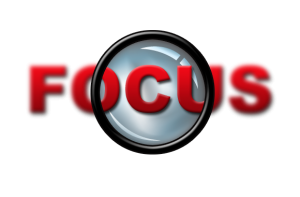Leverage Systems
The most obvious systems are those we create – manufacturing systems, IT systems, accounting systems, etc. But they are only part of the story. Most systems are less visible because we don’t create them – we simply find ourselves immersed in them. They can be as difficult for us to see as it is for a fish to see water. Yet these less visible systems have a profound effect on our efforts to achieve results.
What are examples of invisible systems? The weather. Our culture. The physics, chemistry and biology of all that surrounds us. Human nature. Climate change.
How do systems affect our ability as business leaders to get things done?
Too often, we “over control” the systems we create (eg: manufacturing, IT, etc.). We try to control what we believe we can control such as through rigid policies and procedures. Meanwhile, we ignore those systems that we didn’t create. The result? The “over control” of systems we create interferes with the natural systems that surround us (a reaction called “tampering”) and causes the natural systems to “bite us back”. Such are the dynamics of “unintended consequences”.
Consider the natural system of human nature. Humans are inherently creative beings who are meaning-making and meaning-seeking. For the most part, human beings can be trusted to do the right thing. Now, assume an employee betrays that trust by stealing. Rather than focus on the isolated incident, many organizations react by developing policies that suggest that all employees steal. A common example is to deny or delay reimbursement of employees’ reasonable and well-invested promotional expenses in order to enforce highly rigid rules to prevent stealing. The result? The human system encourages employees to find ways around the rigid rules, or alternatively, to give up their efforts to promote the company at a reasonable cost. Either way, the natural system, when tampered with, bites back with unintended consequences.
How might you heighten your sensitivity to systems?
Start with an activity that involves one of the most accessible systems – nature. Activities that interact with nature include golfing, skiing, sailing, boating, etc.
Now, attempt your activity in two different ways. First, try to “over control” your activity, such as by “powering against” the wind, wave or current. Then assess your success relative to the investment of effort this required.
Second, try again. This time relax. Be more aware of the natural forces around you. Ride these forces like a surfer rides a wave rather than fight them. Again, assess your success relative to your effort. How much better was your “ROI” on the second attempt?
Here’s another exercise you can try next time you are looking for something. Say you are looking for a particular item among many shelves of inventory or you are looking for a particular entry in a complex computer printout.
First, look for that item very intently. Put a lot of effort into your search. Look “hard”. How quickly did you find the item you were looking for? Or did you even find it at all?
Second, look for another item. This time, as you gaze forward at the shelves or the document, relax, really relax. Notice as you continue to look forward how your peripheral vision starts to expand. Without turning your head, you now have a vastly larger view of the landscape that stands before you. Continue to relax and see if the item you’re looking for doesn’t literally leap into your site. How much time did that take? How much effort did it take? Chances are, the second technique will help you find what you looking for in less time and with less effort. In other words, the second technique enhances your productivity.
Now think about your business. What are examples of where your organization fights against the systems it’s in? How is this using up excessive amounts of resources or generating unintended consequences? How might your business more gently and elegantly “ride” the many forces that surround it to generate more predictable results at a lower cost?
For help or more information, tour the rest of this blog, or take advantage of a no cost or obligation 30 minute consultation. Sign up here



Recent Comments